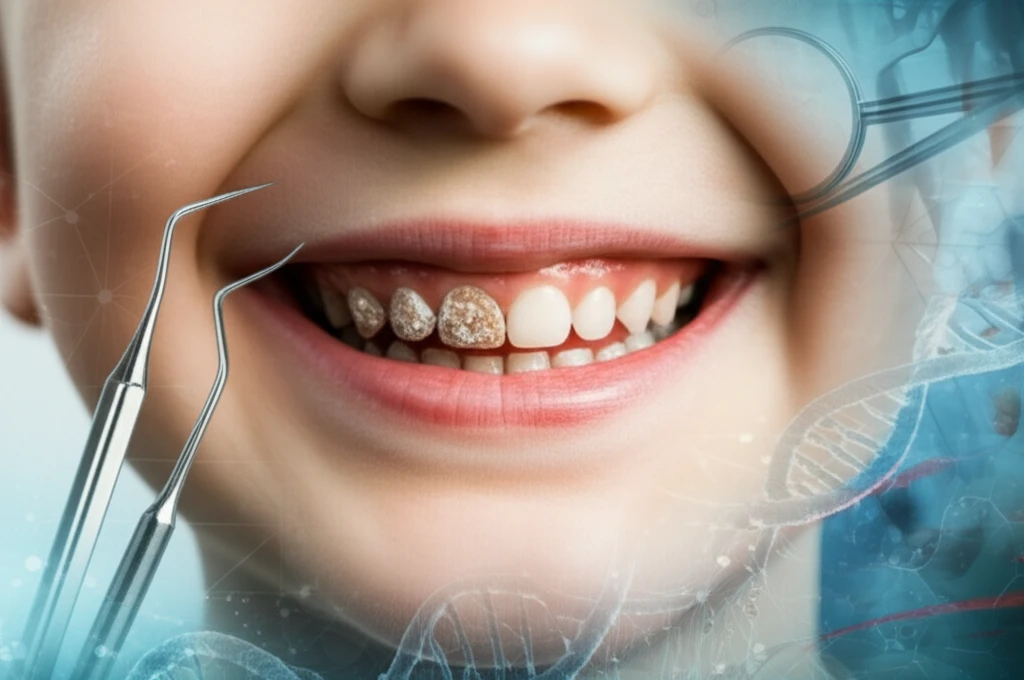
MIH Enamel: Unlocking the Secrets to Stronger Teeth
"A comprehensive look at molar-incisor hypomineralization, its impact on enamel, and what you can do to protect your child's smile."
Imagine your child's permanent teeth emerging, not with a brilliant, strong sheen, but with chalky, discolored patches. This is the reality for many children affected by molar-incisor hypomineralization (MIH), a condition where the enamel, the tooth's protective shield, doesn't develop properly. MIH can make teeth more susceptible to cavities, sensitive to temperature, and even prone to crumbling. Understanding this condition is crucial for parents and caregivers.
MIH, first defined in 2001, is a qualitative developmental defect that affects at least one permanent molar and may involve the incisors. While the exact cause remains elusive, research points to a multifactorial pathogenesis, potentially involving genetic components. The prevalence is significant, ranging from 3% to 22% in Europe and even higher in other parts of the world, making it a common concern for dental professionals.
This article dives deep into the structural, mechanical, and chemical changes associated with MIH-affected enamel, drawing upon a comprehensive review of existing research. We'll explore how MIH impacts tooth structure, what treatments are available, and provide actionable insights to help you protect your child's dental health and overall well-being.
What's Happening Inside MIH-Affected Teeth?

Recent research has shed light on the specific alterations that occur in enamel affected by MIH. These changes impact the enamel's strength, appearance, and overall health. A systematic review of 23 studies provides clear evidence of these structural differences.
- Reduced Mineral Content: MIH enamel contains less calcium and phosphorus, the building blocks of strong teeth.
- Increased Porosity: The enamel becomes more porous, making it vulnerable to bacteria and decay.
- Higher Protein Content: MIH enamel has a higher protein concentration compared to healthy enamel, disrupting the mineralization process.
- Structural Changes: Crystals within the enamel are less organized, with loosely packed crystals and wider spaces between them.
- Increased Carbonate Levels: There's an elevated presence of carbon and carbonate, further weakening the enamel structure.
Taking Control of MIH: What Can You Do?
While MIH presents challenges, it's important to remember that proactive management can significantly improve outcomes. Here's what you can do:
Early Detection: Regular dental check-ups are essential for early diagnosis. Dentists can identify MIH even before significant damage occurs. Protective Measures: Fluoride treatments, sealants, and special toothpastes can help strengthen the enamel and prevent decay. Dietary Changes: Limiting sugary drinks and snacks reduces the risk of acid attacks that further erode weakened enamel. Restorative Treatments: When damage occurs, fillings, crowns, or other restorations can protect and restore affected teeth. Remember, each child's case is unique, and treatment plans should be individualized.
By staying informed, working closely with your dentist, and adopting preventive strategies, you can help your child maintain a healthy, confident smile despite the challenges of MIH. The future of dental care involves understanding these conditions and providing personalized, effective solutions. Early intervention is key!
